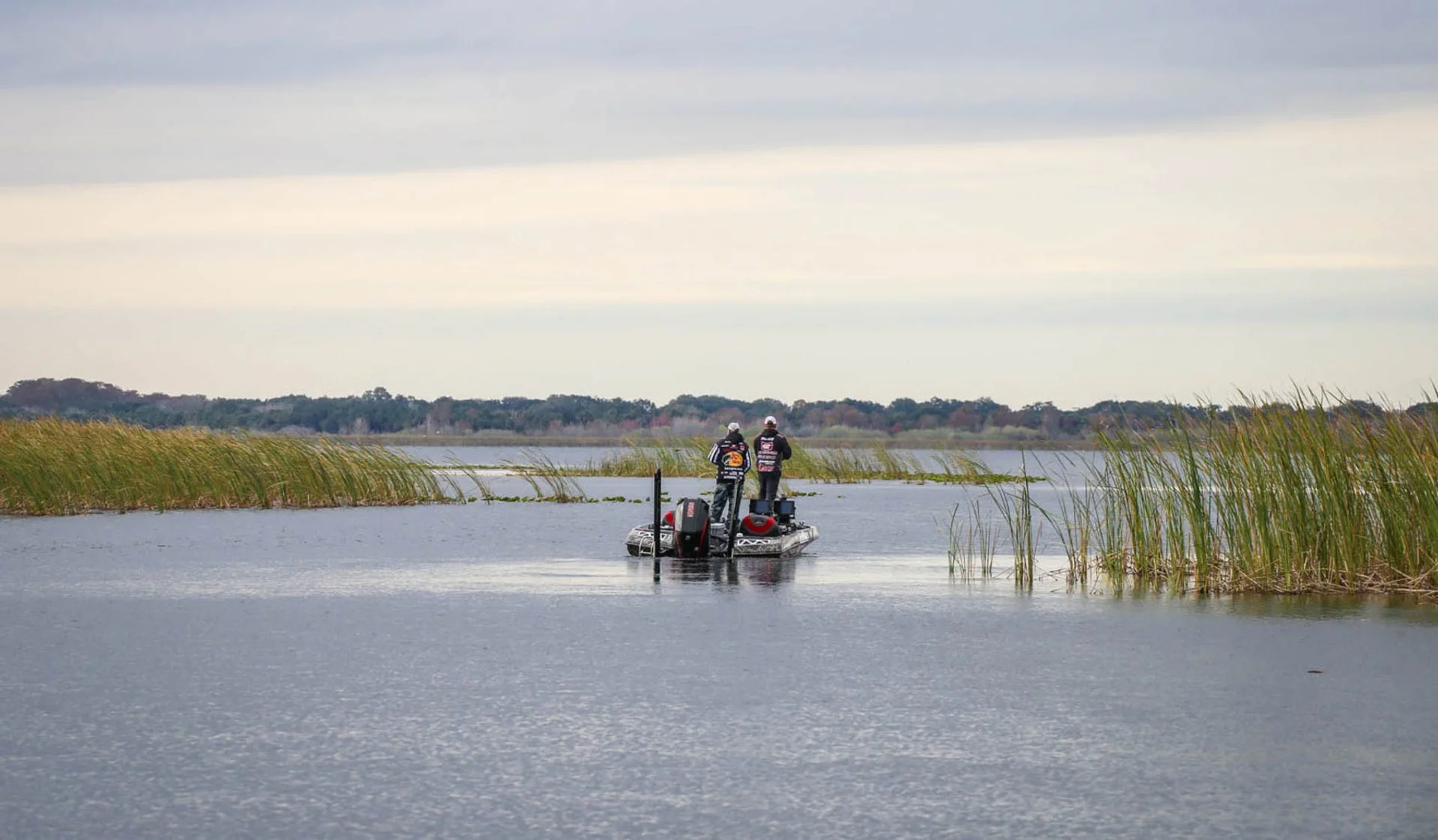Dropshot Dynamics

From pitching to docks, reeds, and shallow rocks, to vertically dropping to fish and cover that you’ve spotted on sonar, the dropshot is a straight-up fish producer.
Unquestionably one of the most versatile and dependable finesse rigs ever designed, the dropshot’s configuration — a bait held horizontally above a weight – allows bass anglers optimal control over presentation. Consider these variables when building your rig.
Bait Style: Slender worms typically define the standard dropshot and lengths may vary from diminutive 4-inchers to a more common size of 6-7 inches. Next in line would be a baitfish imitator; something resembling the profile of a shad, shiner, goby, etc. These two bait styles probably account for the majority of dropshot presentations, but don’t hesitate to try a small creature bait or craw bait, especially around bed fish or anywhere crawfish are common.
Hook Placement: Nose hooking is the usual arrangement, as it ensures maximum bait motion by creating a forward pivot point. Strategy note: Run a Mustad Dropshot hook through the underside of the bait’s head, but rather than bringing it out through the top of the head, bring the point out through the bait’s nose. This leaves less bait mass in the hook gap, while positioning the point for immediate connection.
For a different look, run the hook through the bait’s head sideways. When the bite is tough, this method can tempt fish with a unique shimmying motion. Also, consider rigging worms wacky style (hook through the center) on a Mustad TitanX Wacky/Neko hook for a double wiggle that’s a real deal closer.
Lastly, around vegetation, wood or anything else that might snag an open hook presentation, you might do well to Texas-rig your bait on a Mustad Gip Pin Edge Finesse Hook. For thicker body creature baits, or even tubes, use the Mustad Double Wide KVD Dropshot Hook.
Weight Shape: Bottom composition drives this straightforward decision. For rocks and gravel, use a round or tear drop shape weight. For grass and other entangling vegetation, the slender profile of a cylinder weight slips in and out of cover.
Weight Size: Most agree that lighter is better, but in deep water and/or windy conditions, a heavier weight serves you best with a faster fall that keeps your bait on target. Also, going heavier than needed can help trigger bites from suspended fish that often react to a potential meal zipping past their nose.
Leader Length: When fish are holding close to the bottom, a short leader of 3-5 inches is best, but if they’re suspending higher, maybe over a small brush pile, a leader of 2-3 feet or more may be in order. Generally, something in the 8- to 12-inch range is a good start.
For maximum flexibility, use dropshot weights with tension clips. Unlike line tie rings, tension clips hold your line with pressure and allow you lengthen or shorten your leader without retying each time.
Power Shot: When bites are tough around laydowns or other shallow cover, toss the finesse notion out the window and Texas rig a hefty worm on a Mustad KVD Grip Pin Max flipping hook. Same dropshot presentation, but a heavier tackle (usually baitcasting gear with 20-pound line) presentation that will stand up to the more demanding habitat.
